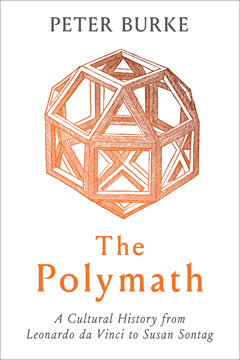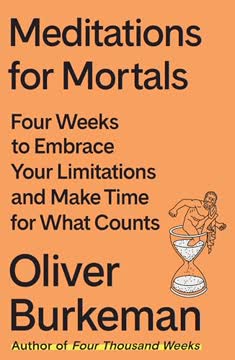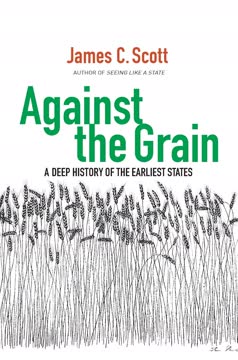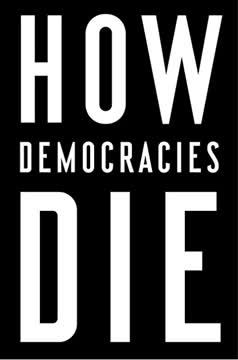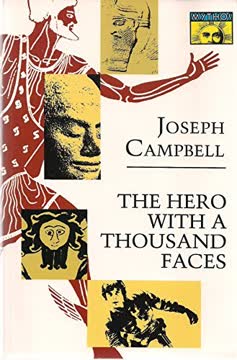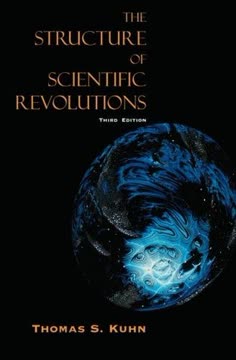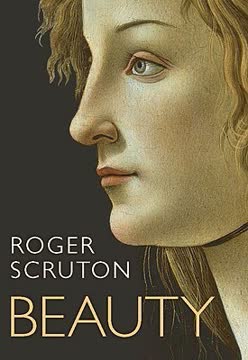Key Takeaways
1. Defining the Polymath: Beyond Specialized Knowledge
有學者認為,這幅用紅粉筆繪成的英俊長者肖像確實如畫上題字所言,是達文西無誤。
Defining Polymathy. A polymath is someone with deep knowledge across many different subjects, not just a passing interest. This book focuses on academic knowledge, those with an "encyclopedic" interest in learning. It excludes those who are simply successful in business or sports, focusing instead on individuals who synthesize knowledge across diverse fields.
The Shifting Definition of "Discipline." The meaning of "discipline" has evolved over time, from ancient Greek athletic, religious, military, and philosophical training to the modern concept of academic subjects. This evolution makes it challenging to compare polymaths across different eras, as the boundaries and expectations of disciplines have changed significantly.
Purpose and Methodology. This book uses collective biography to examine the lives of 500 individuals from the 15th to 21st centuries. It seeks to identify the social and intellectual conditions that foster or hinder polymathy, exploring the motivations, challenges, and contributions of these individuals in an increasingly specialized world.
2. Historical Roots: Polymathy in Ancient and Medieval Worlds
有學者認為,這幅用紅粉筆繪成的英俊長者肖像確實如畫上題字所言,是達文西無誤。
Ancient Greece and China. The concept of broad knowledge has ancient roots. In Greece, figures like Pythagoras and Aristotle exemplified polymathy, though debates existed about the value of breadth versus depth. Ancient China also valued "broad learning" and "knowledge of things," with scholars expected to be well-versed in classics, poetry, history, and politics.
Medieval Europe's Preservation of Knowledge. During the early Middle Ages, the focus shifted to preserving and compiling existing knowledge rather than creating new knowledge. Scholars like Boethius, Isidore of Seville, and Gerbert of Aurillac played crucial roles in safeguarding classical traditions.
Islamic World's Contributions. Simultaneously, scholars in the Islamic world, such as Al-Kindi, Ibn Sina, Ibn Rushd, and Ibn Khaldun, made significant contributions across philosophy, medicine, mathematics, and other fields. They built upon Greek knowledge and expanded intellectual horizons.
3. The Renaissance Ideal: A Flourishing of Universal Minds
這是達文西替修士朋友帕西奧利的作品《論神聖比例》(1509)所繪的插圖,充分顯示了他對數學的著迷。
The Renaissance Ideal. The Renaissance saw a renewed emphasis on the "uomo universale," the universal person skilled in both intellectual and practical pursuits. Figures like Leon Battista Alberti and Leonardo da Vinci embodied this ideal, excelling in arts, sciences, and engineering.
Beyond Scholarship. The Renaissance ideal extended beyond academic knowledge to encompass physical skills, artistic talents, and civic engagement. A complete individual was expected to be proficient in areas ranging from combat to music.
The Myth of the Renaissance Man. While the Renaissance celebrated polymathy, it's important to recognize that the concept was often romanticized. Not all individuals achieved true mastery across multiple fields, and some contemporaries questioned the depth of their knowledge.
4. The Age of Erudition: Monsters of Knowledge in the 17th Century
現代人對哥白尼的印象只有他主張地太陽才是宇宙中心,而非地球。
The 17th Century's Emphasis on Erudition. The 17th century witnessed a surge in polymathy, with scholars like Hugo Grotius, Samuel Pufendorf, and Athanasius Kircher demonstrating encyclopedic knowledge across diverse disciplines. This era emphasized erudition and the synthesis of knowledge.
Women's Contributions. Despite societal barriers, women like Marie de Gournay, Anna Maria van Schurman, and Queen Christina of Sweden made significant intellectual contributions. They excelled in languages, philosophy, and the arts, challenging traditional gender roles.
The Drive for Integration. Many 17th-century polymaths sought to integrate knowledge and reconcile conflicting ideas. Figures like Giovanni Pico della Mirandola and Jean Bodin aimed to harmonize diverse perspectives and create unified systems of thought.
5. The Rise of Specialization: Challenges to Polymathy
現代人對史威登堡的印象幾乎只有他晚年所寫的宗教文章,尤其是畫中的他手裡拿著《詮釋啟示錄》,因此可能想不到這位瑞典博學者年輕時是很有名的工程師,從冶金、化學、天文學、解剖學、生理學到面相學都有他的貢獻。
The Knowledge Crisis. The increasing volume of knowledge in the 17th century led to a sense of crisis, with scholars lamenting the fragmentation of disciplines and the difficulty of mastering all available information. This crisis prompted efforts to organize and classify knowledge.
Criticism of Polymathy. As specialization gained traction, polymathy faced increasing criticism. Some argued that polymaths were superficial, lacking deep expertise in any one field. The term "dilettante" acquired negative connotations, implying a lack of serious commitment.
The Ideal of the Man of Letters. In response to the challenges of polymathy, a new ideal emerged: the "man of letters." This figure was expected to be knowledgeable across a range of subjects but also to possess elegance, clarity, and the ability to communicate effectively with a broad audience.
6. Cultural and Social Factors: Nurturing or Stifling Polymathy
現代人對史威登堡的印象幾乎只有他晚年所寫的宗教文章,尤其是畫中的他手裡拿著《詮釋啟示錄》,因此可能想不到這位瑞典博學者年輕時是很有名的工程師,從冶金、化學、天文學、解剖學、生理學到面相學都有他的貢獻。
Geographical and Religious Influences. The book explores how geographical location and religious affiliation influenced the development of polymathy. Certain regions, such as the Dutch Republic and German-speaking lands, fostered intellectual curiosity and provided opportunities for broad learning.
The Role of Institutions. Universities, libraries, and scientific societies played crucial roles in supporting polymathy. These institutions provided access to knowledge, facilitated intellectual exchange, and offered patronage to scholars.
The Importance of Networks. Polymaths often thrived within networks of like-minded individuals. These networks facilitated the exchange of ideas, provided support, and fostered a sense of intellectual community.
7. The Polymath's Toolkit: Curiosity, Memory, and Synthesis
楊格曾在劍橋大學擔任導師,由於興趣廣泛而有「天才楊格」(Phenomenon Young)之稱。
Key Traits of Polymaths. The book identifies several key traits that characterize polymaths, including insatiable curiosity, exceptional memory, and the ability to synthesize information across diverse fields. These traits enable polymaths to connect seemingly disparate ideas and generate new insights.
The Power of Analogy. Polymaths often excel at drawing analogies between different fields, using insights from one discipline to illuminate another. This ability to see connections and patterns is a hallmark of their intellectual creativity.
The "Da Vinci Syndrome." While polymathy can be a source of great strength, it also carries the risk of superficiality and a lack of focus. Some polymaths suffer from what the author terms the "Da Vinci Syndrome," spreading themselves too thin and failing to achieve mastery in any one area.
8. Modern Polymathy: Navigating a Fragmented World
赫歇爾曾被稱作「世上最後一位偉大的全才」,雖然以天文學家身分最為人知,但對數學、化學、磁學、植物學、地質學、聲學、光學和攝影也有不小的貢獻,閒暇時還翻譯荷馬、但丁和席勒的作品自娛。
The Persistence of Polymathy. Despite the increasing specialization of knowledge, polymathy persists in the modern world. New fields like systems theory and semiotics provide opportunities for integration, while individuals continue to bridge disciplines and challenge conventional boundaries.
The Role of Cultural Critics. In a fragmented world, cultural critics play an important role in synthesizing knowledge and providing broader perspectives. Figures like Susan Sontag and Umberto Eco exemplify this role, engaging with diverse subjects and connecting high and low culture.
The Future of Polymathy. The digital age presents both challenges and opportunities for polymathy. While information overload can be overwhelming, new tools and technologies can also facilitate access to knowledge and collaboration across disciplines.
Last updated:
FAQ
1. What is The Polymath: A Cultural History from Leonardo da Vinci to Susan Sontag by Peter Burke about?
- Comprehensive cultural history: The book traces the evolution of polymaths—individuals with expertise across multiple disciplines—from the Renaissance to the 21st century, focusing on their cultural and social impact.
- Focus on Western intellectuals: Burke examines around 500 polymaths, primarily in the Western world, analyzing their biographies, achievements, and the environments that shaped them.
- Interdisciplinary approach: The narrative blends cultural history, social context, and intellectual biography to explore how polymaths contributed to knowledge and how their roles changed over time.
- Contemporary relevance: The book also addresses the challenges and opportunities for polymaths in the digital age, considering the tension between information overload and integrative knowledge.
2. Why should I read The Polymath by Peter Burke?
- Insight into intellectual versatility: The book provides a deep understanding of the psychological and social traits that define polymaths, inspiring readers interested in broad intellectual pursuits.
- Historical and cultural perspective: Burke’s work offers a sweeping view of how polymathy has evolved and been perceived, helping readers appreciate its role in shaping knowledge and culture.
- Practical lessons on interdisciplinarity: The book discusses the rise of interdisciplinary research and education, offering valuable insights for navigating today’s complex knowledge landscape.
- Reflection on modern challenges: Burke addresses the impact of the digital revolution on knowledge acquisition, making the book relevant for understanding contemporary intellectual life.
3. What are the key takeaways from The Polymath by Peter Burke?
- Polymathy’s enduring value: Despite increasing specialization, polymaths have played crucial roles in integrating knowledge and fostering innovation.
- Traits and environments matter: Curiosity, memory, imagination, and supportive environments are essential for the development of polymaths.
- Challenges of breadth vs. depth: Polymaths often struggle to balance wide-ranging interests with the need for deep expertise, a tension that persists today.
- Interdisciplinary collaboration is vital: The book highlights the importance of crossing disciplinary boundaries to address complex problems in the modern world.
4. How does Peter Burke define a polymath in The Polymath?
- Interest and depth: A polymath is someone deeply interested in and knowledgeable about many academic subjects, not just a generalist or practical expert.
- Exclusion of non-academic figures: Burke excludes entrepreneurs and business leaders whose polymathy lies outside scholarly pursuits.
- Types of polymaths: The book distinguishes between passive (knowledgeable but not creative), active (creators and integrators), clustered (experts in related fields), and serial polymaths (who change fields over time).
- Focus on academic achievement: The definition centers on those who have made significant contributions to academic knowledge.
5. What are the key psychological traits of polymaths according to Peter Burke?
- Insatiable curiosity: Polymaths are driven by a strong desire to know, often described as "libido sciendi."
- Exceptional memory and focus: They possess strong memory and the ability to concentrate deeply, enabling them to master vast amounts of information.
- Imagination and creativity: Polymaths excel at making analogies and connecting ideas across fields, leading to innovative insights.
- High energy and work ethic: They often work long hours and manage multiple interests, supporting their diverse intellectual output.
6. What historical periods and cultures does The Polymath by Peter Burke cover?
- From ancient to modern: The book begins with ancient Greek and Roman polymaths, touches on medieval Europe, Islamic, and Chinese traditions, but focuses mainly on Western polymaths from the Renaissance onward.
- Cultural comparisons: Burke briefly compares Eastern and Western traditions, noting differences in academic disciplines and the social roles of polymaths.
- Knowledge crises: The narrative highlights two major knowledge crises in the 17th and 19th centuries, caused by knowledge explosion and fragmentation.
- Modern era focus: The book continues through the 20th and 21st centuries, examining how polymathy adapts to contemporary challenges.
7. What are the main social and intellectual challenges faced by polymaths in The Polymath?
- Knowledge explosion: The rapid increase and fragmentation of knowledge, especially after the invention of printing and scientific revolutions, made it harder for polymaths to keep up.
- Pressure to specialize: Academic and institutional specialization often limited polymaths’ ability to master multiple fields deeply.
- Social and institutional barriers: Universities, religious authorities, and cultural attitudes sometimes supported but often hindered polymathy.
- Balancing breadth and depth: Polymaths faced criticism for superficiality or dilettantism, especially as specialization became the norm.
8. How does The Polymath by Peter Burke address the tension between specialization and polymathy?
- Historical rise of specialization: Burke traces the increasing specialization of knowledge from the 19th century onward, which created barriers to polymathy.
- Critiques of specialization: Polymaths and some scholars criticized specialization for fragmenting knowledge and stifling creativity, using metaphors like "Balkanization."
- Interdisciplinary responses: The book explores efforts to bridge disciplines through informal clubs, interdisciplinary institutes, and collaborative research.
- Polymaths as integrators: Polymaths often serve as connectors, synthesizing knowledge across fields and balancing depth with breadth.
9. What is the "Da Vinci Syndrome" described in The Polymath by Peter Burke?
- Definition: The "Da Vinci Syndrome" refers to the tendency of polymaths to have scattered interests, which can prevent them from completing projects or publishing works.
- Historical examples: Leonardo da Vinci, Peiresc, and Leibniz are cited as polymaths with many unfinished projects or unrealized ideas.
- Implications: While broad curiosity is a strength, it can also lead to difficulties in focus and follow-through.
- Managing the syndrome: Burke suggests that successful polymaths must find ways to balance their wide-ranging interests with the need for completion.
10. Who are some notable polymaths featured in The Polymath by Peter Burke, and what fields did they cover?
- Leonardo da Vinci: Renowned for his work in art, engineering, anatomy, and scientific observation, embodying the Renaissance ideal.
- Gottfried Wilhelm Leibniz: Contributed to philosophy, mathematics, history, linguistics, and science, representing the "golden age" of polymathy.
- Susan Sontag: A modern polymath known for her work in writing, criticism, philosophy, and the arts.
- Others: The book also highlights figures like Christine de Pizan, Voltaire, Mary Somerville, Benjamin Franklin, Norbert Wiener, and Pierre Bourdieu, illustrating the diversity of polymathic achievement.
11. What role did environment, education, and social context play in shaping polymaths according to The Polymath by Peter Burke?
- Geographic and cultural factors: Polymaths often emerged in regions with high literacy, urban centers, and vibrant intellectual networks, such as Germany, Britain, France, and the Netherlands.
- Religious and social influences: Work ethics associated with Protestantism, Judaism, and other traditions, as well as family background and social class, influenced polymath development.
- Education and self-learning: Many polymaths were self-taught or benefited from rich family libraries and private tutors, while formal schooling sometimes constrained their breadth.
- Institutional support: Universities, libraries, museums, and courts historically provided resources and spaces for polymaths, though modern academia’s specialization poses challenges.
12. What are the best quotes from The Polymath by Peter Burke, and what do they mean?
- On curiosity: Francis Bacon’s "libido sciendi" highlights the polymath’s insatiable desire to know, emphasizing curiosity as a core trait.
- On integrative power: Leibniz’s assertion that "the world needs polymaths because those who connect all things can do the work of ten" underscores the value of synthesis.
- On time management: Darwin’s belief that "whoever dares to waste an hour does not understand the value of life" reflects the disciplined approach of polymaths.
- On specialization: The metaphor of knowledge "Balkanization" illustrates the fragmentation caused by excessive specialization, reinforcing the need for polymathic synthesis.
Review Summary
The Polymath receives mixed reviews, with some praising its exploration of polymathy throughout history and others criticizing its superficial treatment of subjects. Readers appreciate the book's insights into the traits and environments conducive to polymathy but find the extensive list of names tedious. Many reviewers note the focus on Western figures and lack of in-depth analysis. Despite these criticisms, some find value in the book as an introduction to the concept of polymathy and a starting point for further research.
Similar Books
Download PDF
Download EPUB
.epub digital book format is ideal for reading ebooks on phones, tablets, and e-readers.
